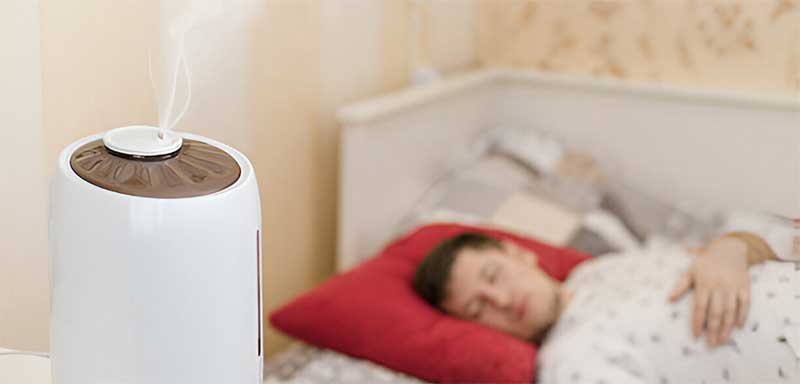
Scratch No More: The Best Medicated Shampoos for Itchy Scalp Relief

The idea that living with asthma and allergies can be a day-to-day struggle is no surprise. However, having the right humidifier can make a big difference in how well you control symptoms. Humidifiers moisten the air which helps prevent dryness that worsens asthma and allergy symptoms usually encountered during cold weather conditions. This is an all-inclusive guide into getting the best humidifier for asthma and allergies, choosing the most suitable one or proper humidity levels importance on respiratory health.
Are you exhausted from dealing with asthma and allergies? If you find a right humidifier this is a major difference. In this ultimate guide, we’ll help you weave through the overwhelming options to make the best choice on which is the best humidifier for your specific requirements. We have got you covered whether you want to reduce symptoms or create a healthier environment. The increasing occurrence of asthma and allergies requires a clear understanding how a humidifier can provide relief.
Humidifiers can relieve dryness and congestion, reducing the frequency and severity of symptoms by putting moisture in the air. However, there are so many types and features that it becomes hard to determine which one will be right for you. That is what our guide tackles.
Our guide will also talk about various types of humidifiers such as evaporative, ultrasonic and steam explaining their pros and cons. The factors like room size, maintenance, additional features are also delved into here. By going through this guide;-you will have enough information for decision-making so that breathing becomes an easy experience ever after it is over You can get all of these details when we look at the best humidifier for asthma and allergies for your allergic needs including considerations for rooms sizes etc.
Asthma and Allergies are common respiratory conditions that heavily impact on an individual’s quality of life. Additionally both conditions share similar symptoms including wheezing, coughing as well as shortness of breath; hence they need appropriate management strategies that work effectively among them For instance, one tool that has attracted attention due its potential in relieving these symptoms is the use of a humidifier. In order to choose best humidifier for asthma and allergies for asthma patients or allergy sufferers people must understand how they work and why it may be beneficial to select them.
This medical situation involves inflammation coupled with narrowing down airways thereby leading to difficulties while breathing. Contrarily, allergies are immune system responses to allergens such as pollen, dust mites or pet dander. These dry air conditions can also trigger or make worse both of these afflictions and they irritate the respiratory system thereby making symptoms worse.
Humidifiers add moisture to the air so that there is optimal humidity in your living space. The best humidifier for asthma and allergies moistens the airways and keeps them from drying up as a result of which it lessens irritation in the respiratory tract therefore reducing chances that may lead to less attacks and flare-ups of allergic reactions so this is an essential product for managing these diseases.
The best humidifier for asthma and allergies can alleviate specific allergic indicators but also improve general indoor air quality too. Correct humidity levels make the air feel more comfortable, curb static electricity as well as help preserve wooden furniture and musical instruments too.
Understanding asthma and allergies is the first step towards effectively managing these conditions. Use a humidifier together with other strategies to ensure optimal humidity levels as this reduces respiratory irritation significantly if added in your toolbox. This will allow you to comfortably breathe indoors if you pick out one of the top rated humidifiers for people with asthma or allergies; making it possible for you to live better!
To manage asthma and allergies, it is important to balance the humidity level in your house. The correct level for indoor humidity usually ranges from 30% – 50%. If levels are too high or too low, they may worsen respiratory conditions and provide room for the growth of allergens.
Humidifiers add moisture to the air. They come in different shapes and sizes with each having unique features. Using a good humidifier for people with asthma and allergies could be a great relief in relation to their symptoms as well as improving overall indoor air quality.
For someone suffering from respiratory ailments such as asthma or allergy, it is therefore crucial to maintain good standards of indoor air quality. One way through which this can be achieved is by use of humidifiers. So what exactly is a humidifier? The phrase “best humidifier for asthma and allergies” can provide solace to those who are battling these circumstances.
A humidifier refers to an appliance that adds moisture into the atmosphere thereby increasing its humidity within one room or even an entire building. Thus having balanced indoor humidity ranging between 30-50% can create comfortability while maintaining healthiness especially towards individuals with respiratory problems.
Humidifiers work by emitting water vapor or steam into the air, which helps to counteract dryness resulting in symptoms of asthma and allergies. These are different types of humidifiers:
The best humidifier for asthma and allergies can significantly reduce symptoms by ensuring that airways remain damp so as to minimize irritation effects thereof. Coughing, sneezing and stuffiness worsen when there is too little moisture in your living quarters making breathing much more difficult than it should be. Moisture added increases comfort while also helping with:
In this way you will be in a better position to decide how humidifiers work for controlling asthmatic attacks or getting rid of allergy symptoms. The most recommended humidifier among those with respiratory problems is an investment worth considering as it will make your living area more comfortable when breathing as each inhalation becomes smoother and more relaxing. When you think about improving indoor air quality, a reliable humidifier should be considered as an important part of your respiratory care kit.
When selecting best humidifier for asthma and allergies you would need to understand all types available and their advantages or disadvantages.
Advantages:
Disadvantages:
Advantages:
Cons:
The following is a list of things to keep in mind when deciding on the best humidifier for people with asthma and allergies:
The choice of the best humidifier for asthma and allergies involves searching for specific features that boost its functionality as well as ease of use.
These humidifiers with adjustable settings let you regulate humidity level according to your needs, hence ensuring indoor air quality is optimal.
Having an integrated hygrometer assists in monitoring the moisture level, keeping it at 30% – 50%.
Silent humidifiers are suitable in bedrooms or nursery rooms allowing one to sleep soundly without disturbances.
It has a large water tank which means you won’t have to refill often, making it convenient especially during the night.
Low water level automatically shuts off the unit preventing damage and ensuring safety.
Some humidifiers come with an essential oil tray where you can add fragrant oils that help you to relax and breathe better.
The Levoit LV600HH is a highly flexible powerful humidifier that provides both cool mist and warm mist options. It has quiet operation with a large tank capacity which makes it ideal even when used overnight within bigger rooms.The built-in hygrometer combined with remote control makes this model more convenient while having aromatherapy benefits from the essential oil tray included on the product itself.
The Honeywell HCM-350 utilizes UV technology to kill bacteria which is perfect for air quality conscious people. Its evaporative design ensures self-regulating humidity levels while dishwasher safe parts make cleaning easy and efficient.
This Pure Enrichment MistAire is compact and affordable model designed for small rooms particularly nurseries with its features like quiet operation and a night light. The auto shut-off function is there when the water level goes down ensuring safety.
Vicks Warm Mist Humidifier is the ideal solution if you are looking at relieving your blocked nose as well as chest congestion. For extra relief you just need to add inhalants using the medicine cup provided.The warm vapors also soothe respiratory passages but be cautious about burns.
TaoTronics Ultrasonic Humidifier is uniquely designed with a huge tank and noiseless operation. It has an LED display and sleep mode that makes it easy to use while the high output is perfect for larger rooms. The usage of distilled water can help bring down the creation of white dust.
It is important that your humidifier be well cared for and cleaned regularly to keep it functioning properly as well as safe for individuals with asthma or allergies.
Clean your humidifier at least once a week using a mixture of water/vinegar or mild disinfectant. Pay attention to the tank, base and any parts that can be removed to avoid growth of molds and bacteria.
To have fresh clean water daily, do not refill the same water in the tank but rather empty it on daily basis. This will prevent bacterial and mold breeding through stagnant water.
When your humidifier uses filters, replace them following manufacturer’s suggestions. Changing filters regularly helps maintain air quality as well as efficiency.
Using distilled or demineralized water is helpful where there is hard water since this reduces mineral build up together with white dust formed after evaporation.
Keep track indoor humidity levels by using hygrometer; adjust your humidifier settings accordingly in order to stay within the recommended range between 30% to 50%.
Consider these additional tips alongside using best humidifiers for asthma and allergies so you can manage symptoms effectively.
The right choice of best humidifier for asthma and allergies will significantly improve your life by keeping indoor humidity levels optimal while reducing respiratory irritants. Consider factors such as room size, noise level, ease of cleaning, adjustable humidity settings, built-in hygrometers among others when purchasing a humidifier.
Regular maintenance and cleaning are necessary if you want your humidifier to continue working effectively without causing any harm. In addition to using a humidifier, other home management strategies like regular cleaning; using air purifiers; controlling pet dander should be put into place for healthier living conditions.
You can alleviate asthma and allergy symptoms significantly through investing in high quality humidifiers as well as taking proactive steps towards managing your home environment which contributes to better respiratory health and overall wellbeing.